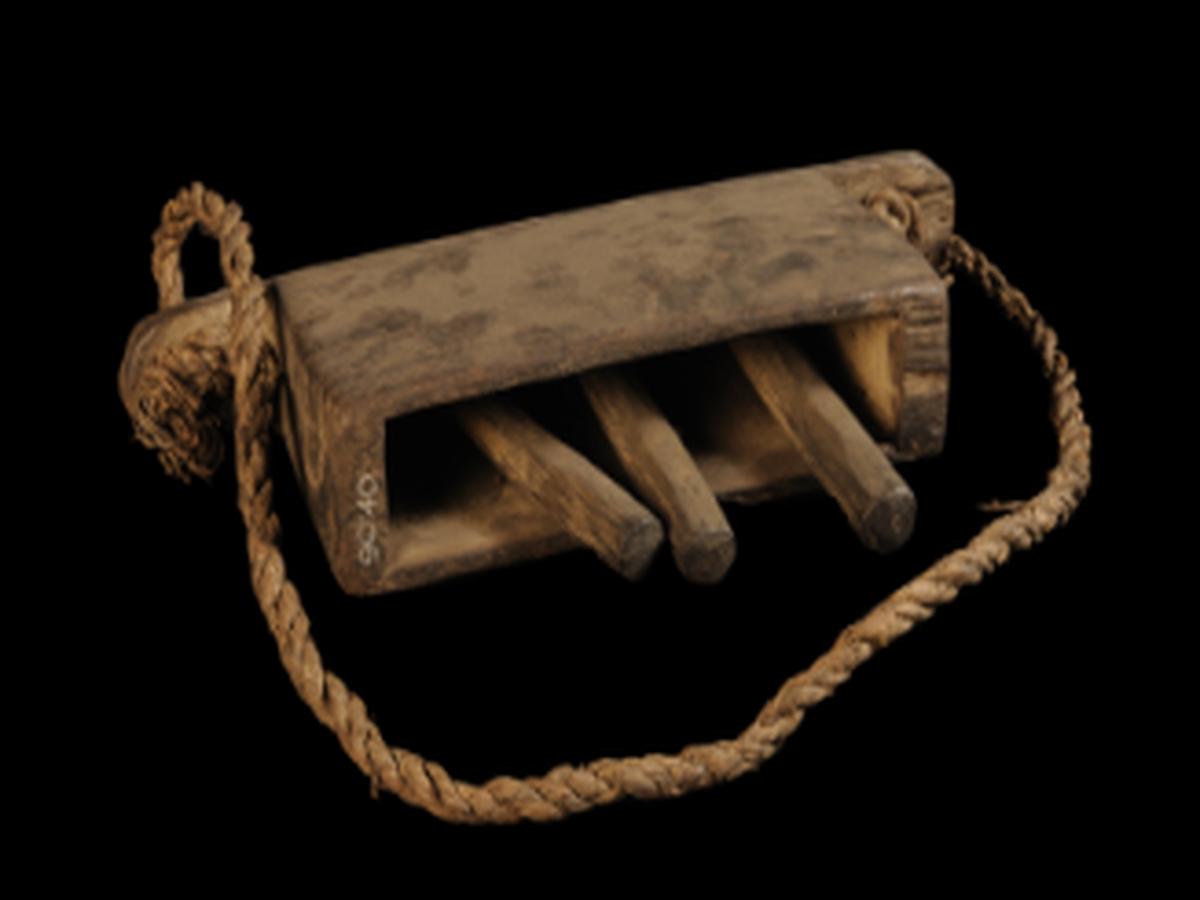State
Tribe Name
Art Type
short description
A bell made of wood and shaped in a cylinder is employed by the Tangkhul Naga tribe, found mainly in the state of Manipur, along with being a pastoral implement for cattle management. The bell is uniquely shaped and comparatively heavy. Its outer rectangular shell is typically fitted on the interior with cylindrical wooden pieces that act as clappers to produce sound. In hilly terrains and dense forests of the area, this bell helps in the locating of cows or buffalos that graze under the care of their drivers.
Thumbnail

Filter Postion
Left
Filter Background
Off
Theme
Filter Header Image

content
Image

description
A bell made of wood and shaped in a cylinder is employed by the Tangkhul Naga tribe, found mainly in the state of Manipur, along with being a pastoral implement for cattle management. The bell is uniquely shaped and comparatively heavy. Its outer rectangular shell is typically fitted on the interior with cylindrical wooden pieces that act as clappers to produce sound. In hilly terrains and dense forests of the area, this bell helps in the locating of cows or buffalos that graze under the care of their drivers.
This hardwood would typically be biodegradable and locally sourced, skillfully hollowed out to form a chamber of resonance. Inside the bell, three cylindrical wooden clappers are suspended that strike the walls of the bell when the animal moves, producing a very distinctive wooden chime. The sound is pleasing to the ear but also serves a purpose, which is that it helps in herding and locating cattle from several kilometers away. A long twisted rope, made from natural fibers or bark strips, is tied to both ends of the bell so that it can be securely tied around the neck of the animal. The wood of the bell and means of manufacturing ensures that it shall be preserved even after such rugged usage. The wooden bell serves a much greater purpose among the Tangkhul Nagas: it is a symbol of indigenous knowledge systems and the close association with livestock that is invaluable to the tribe's agrarian and semi-nomadic way of life. Such objects are also representative of the tribe's sustainable practices, as natural materials are transformed into useful and culturally significant interventions.
Image Mode
landscape
promoted
On
Verified
Off
